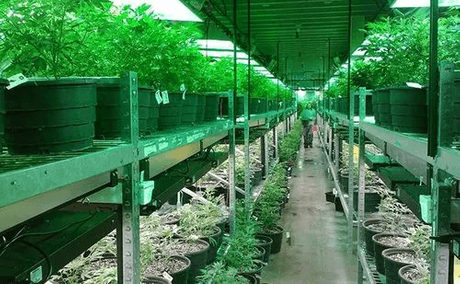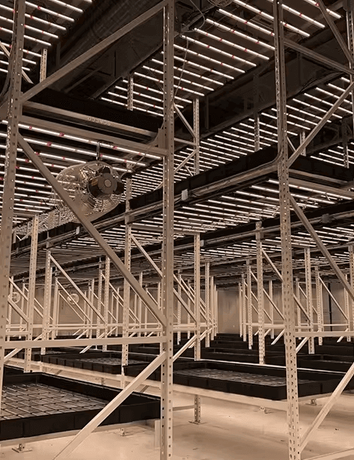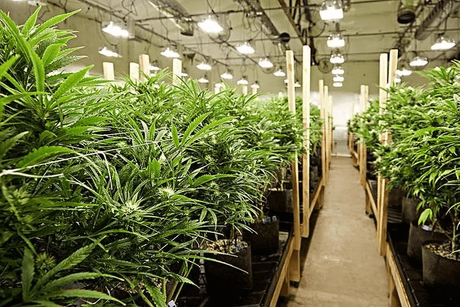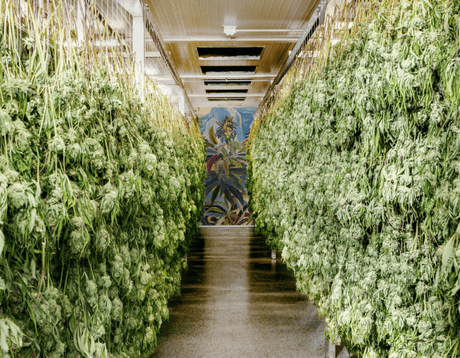Vertical growing racks have become increasingly popular in modern agriculture and horticulture due to their space-saving design and potential for maximizing crop yields. These innovative structures allow plants to be grown vertically, utilizing vertical space efficiently. However, successful cultivation on vertical growing racks requires careful planning and consideration of various factors. In this article, we will explore common considerations when planting on vertical growing racks, including structural design, plant selection, environmental factors, irrigation methods, and maintenance practices.
Structural Design: The structural design of vertical growing racks plays a crucial role in ensuring the stability, functionality, and productivity of the system. Several factors need to be considered in the design phase:
Stability and Load-Bearing Capacity: Vertical growing racks must be structurally sound to support the weight of plants, growing media, irrigation systems, and other equipment. The materials used should be durable and capable of withstanding environmental stresses.
Space Optimization: Efficient space utilization is a key advantage of vertical growing racks. The design should maximize vertical growing area while minimizing the footprint of the structure. Adjustable shelving or modular components can enhance flexibility and adaptability to different plant sizes and growth stages.
Accessibility and Ergonomics: Accessibility is essential for planting, maintenance, and harvesting tasks. The design should facilitate easy access to plants at various heights without straining or injuring workers. Considerations such as shelf height, spacing between shelves, and aisle width are important for ergonomic operation.
Click here to watch a video of Thump's vertical planting rack
Plant Selection: Choosing the right plants for vertical growing racks is critical to achieving successful outcomes. Not all plants are suitable for vertical cultivation, so careful consideration should be given to the following factors:
Growth Habit and Size: Plants with compact growth habits or trailing vines are well-suited for vertical growing racks. Compact varieties of leafy greens, herbs, strawberries, and certain fruiting crops are commonly grown vertically. Avoid plants with extensive root systems or sprawling growth habits that may outgrow the available space.
Light Requirements: Different plant species have varying light requirements, so it's important to match the light intensity and duration provided by the growing environment with the needs of the plants. Positioning racks near natural light sources or supplementing with artificial lighting may be necessary, especially for indoor or low-light environments.
Water and Nutrient Needs: Consider the water and nutrient requirements of selected plants and ensure that the irrigation and fertilization systems can adequately meet these needs. Some crops may have higher water consumption rates or nutrient demands, requiring adjustments to irrigation schedules and nutrient solutions.
Environmental Factors: Environmental conditions have a significant impact on plant growth and productivity in vertical growing systems. Monitoring and managing the following factors are essential for optimizing growing conditions:
Temperature and Humidity: Maintain appropriate temperature and humidity levels within the growing environment to promote healthy plant growth and minimize stress. Proper ventilation and climate control systems can help regulate temperature and humidity levels, especially in indoor or controlled environments.
Air Circulation: Adequate air circulation is crucial for preventing fungal diseases, promoting gas exchange, and strengthening plant stems. Proper spacing between shelves and strategic placement of fans or ventilation openings can improve air movement within the growing racks.
Pest and Disease Management: Vertical growing racks may be more susceptible to pest infestations and disease outbreaks due to the high plant density and enclosed growing environment. Implement integrated pest management (IPM) strategies, such as regular monitoring, cultural practices, and biological controls, to prevent and manage pests and diseases effectively.
Irrigation Methods: Effective irrigation is essential for supplying water and nutrients to plants growing on vertical racks. Consider the following irrigation methods to ensure optimal plant health and productivity:
Drip Irrigation: Drip irrigation systems deliver water and nutrients directly to the root zone of plants, minimizing water waste and reducing the risk of foliar diseases. Install drip emitters or micro-sprinklers along the shelves or at the base of each plant to provide precise irrigation.
Sub-Irrigation: Sub-irrigation systems utilize reservoirs or trays beneath the growing media to supply water to plants from below. This method can help conserve water, reduce evaporation, and maintain consistent moisture levels in the root zone.
Automated Irrigation: Automated irrigation systems with timers or sensors can simplify watering tasks and ensure consistent irrigation schedules. Programmable controllers can adjust irrigation frequency and duration based on environmental conditions, plant growth stage, and water requirements.
Maintenance Practices: Regular maintenance is essential for ensuring the long-term performance and productivity of vertical growing racks. Implement the following maintenance practices to keep the system in optimal condition:
Pruning and Training: Prune plants regularly to remove dead or diseased foliage, promote air circulation, and maintain desired plant size and shape. Training vines or sprawling plants to grow vertically can help maximize space and optimize light exposure.
Cleaning and Sanitation: Keep the growing racks clean and free of debris to prevent the buildup of pests, pathogens, and algae. Regularly disinfect surfaces, trays, and irrigation components to minimize disease transmission and contamination.
Nutrient Management: Monitor nutrient levels in the growing media and adjust fertilization accordingly to prevent nutrient deficiencies or excesses. Conduct regular soil or media tests to assess nutrient availability and pH levels, and make appropriate amendments as needed.
Conclusion: Vertical growing racks offer an innovative and efficient solution for maximizing growing space and increasing crop yields in limited environments. By considering factors such as structural design, plant selection, environmental conditions, irrigation methods, and maintenance practices, growers can optimize the performance and productivity of vertical growing systems. With careful planning and management, vertical growing racks can support sustainable and productive agriculture for a variety of crops, from leafy greens and herbs to fruits and vegetables.
 English
English








